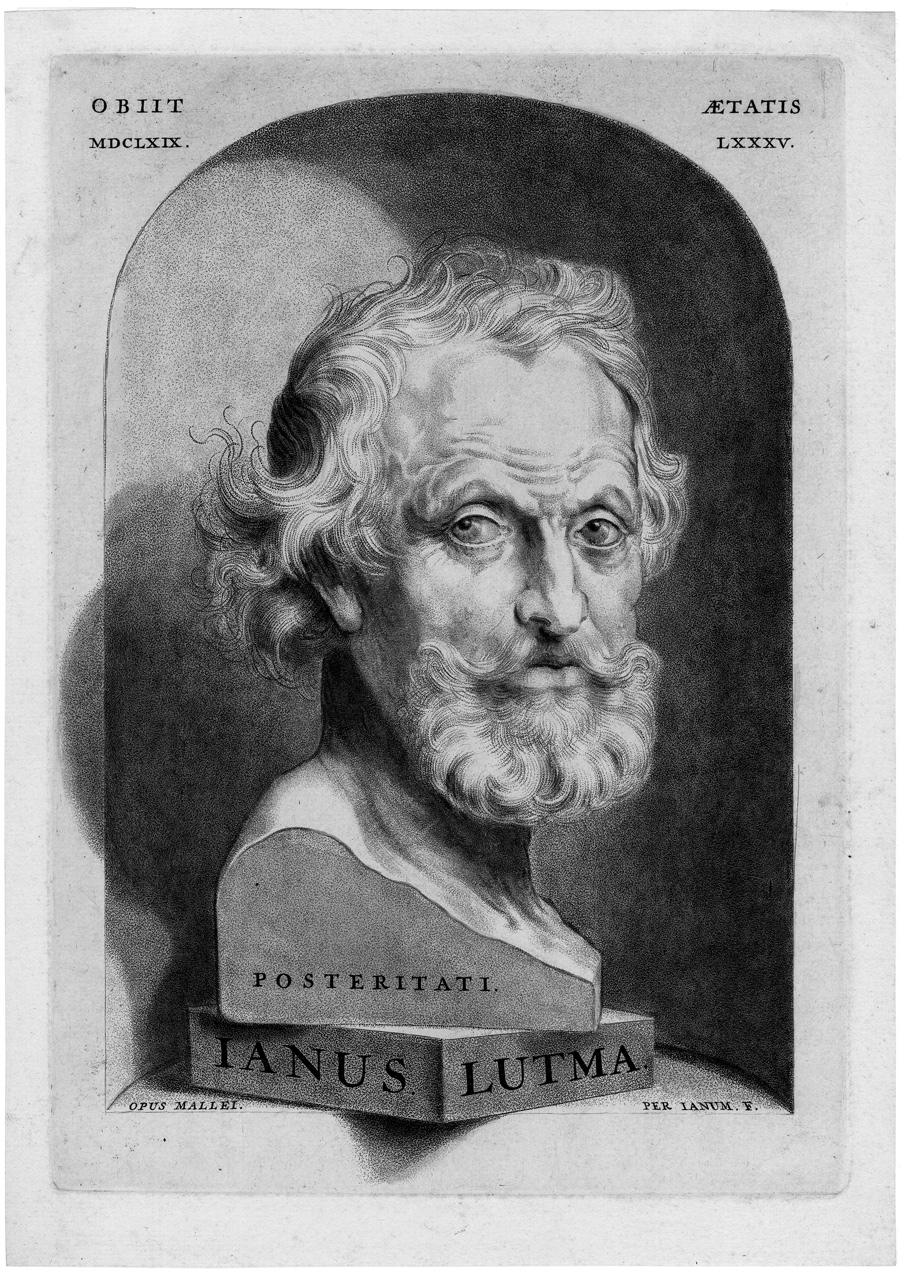Loading the page ...
Jan Lutma the Younger
(1624 – 1685, Amsterdam)
Ianus Lutma Posteritati (Bust of Jan Lutma the Elder). Punch engraving ("opus mallei"). 30.6 x 21.3 cm. Wurzbach 2; Hollstein 6 II.
The goldsmith, coin and copperplate engraver, Jan Lutma II, is considered to be the inventor of a tonal printing technique known as opus mallei, which he used for the first time in a series of engraved portraits of famous contemporaries (Hollstein 6–8) and his own Self-Portrait of 1681 (Hollstein 4, see also Christiane Wiebel, Aquatinta or "Die Kunst mit dem Pinsel in Kupfer zu stechen", Kunstsammlungen der Veste Coburg 2007, pp. 70–71, fig. 44).
The present portrait of his father, Jan Lutma the Elder, was probably done shortly after the latter’s death in 1669. It comes as no surprise that the stippling technique introduced by the son originated in the workshops of the goldsmiths. Jan Lutma I was one of the most important Dutch silversmiths of the 17th century and his son distinguished himself in the same métier. With punch and hammer ("malleus" is the Latin word for hammer) the artist has generated a richly differentiated network of points of varying sizes and densities, thus producing fine tonal gradations. In this procedure the linear effect of the burin or etching needle has been wholly dispensed with. The different stipplings make the subject’s flesh-tints, hair and beard astonishingly lifelike and realistic and create soft transitions emphasizing the three-dimensionality of the face. As usual the portrait has been reworked by Lutma with the brush in order to enrich the shadows and to enhance the velvety, tonal effect.
Lutma the Younger has literally created a monument to his father, presenting him in the manner of an ancient philosopher. His heroic interpretation is fundamentally different from the very personal and intimate portrait of the father that Rembrandt etched in 1656. The portrait bust stands in a narrow, semicircular niche. A flat rectangular plinth inscribed with the Latinized name seems to physically jut out of the niche and casts a dark shadow. The contrast between the desire to immortalize and the need to be true to life seems almost anomalous. Although the bust seems at first glance to be hewn from stone, the tousled curls of his hair and beard and the alert eyes of the father lend the portrait a lifelike character that belies the statuesque severity.
A very fine, nuanced impression with margins around the distinct platemark. Minimal aging, otherwise in impeccable condition.
